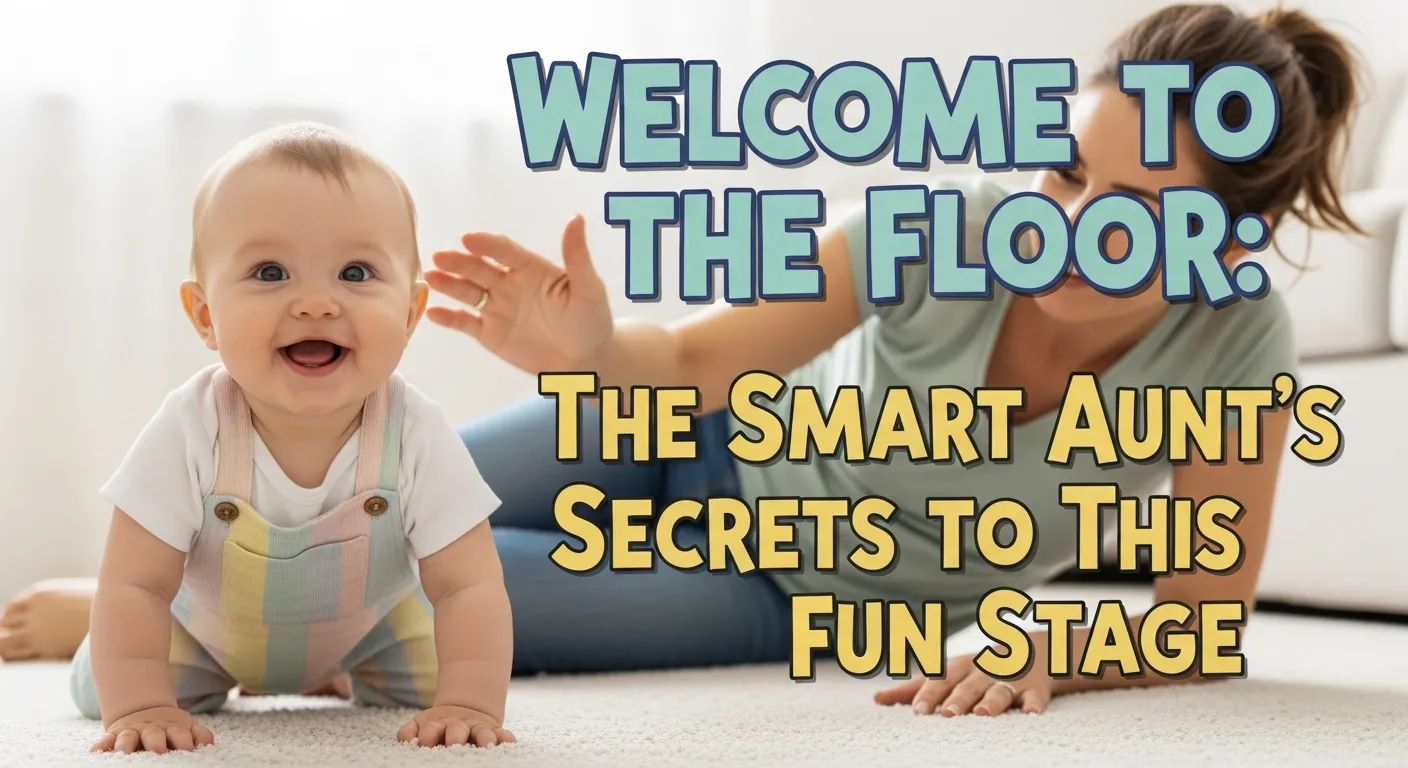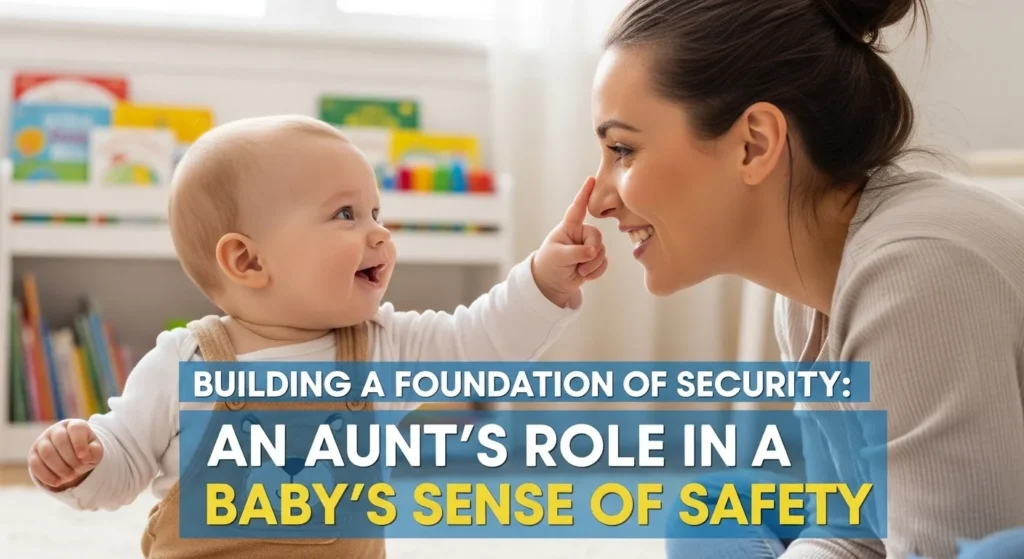
The quiet days of your niece or nephew playing happily on a single blanket are officially coming to an end. One day they are rocking on all fours, and the next, they are halfway across the living room. The mobile baby stage has begun, and it is equal parts thrilling and terrifying.
As your little niece or nephew becomes a baby on the move, your role as an aunt enters an exciting new phase. How can you support their new independence while also helping to keep them safe? By understanding their new skills and creating an encouraging environment, you can be the perfect partner for their first big adventures.
What kind of new movements should I expect from a 7 to 9-month-old?
Direct Answer: This is a huge stage for mobility, so you should expect a lot of variety. You might see the classic hands and knees crawl, but many babies develop their own unique methods, like scooting on their bottom, doing an army crawl on their belly, or pulling themselves up to a stand using furniture.
Evidence: There is no single “right” way for a baby to become mobile. The most important thing is that they are learning to use their body to explore the world with purpose. In my book, Auntie of the Year, I highlight the different ways babies start to explore:
“Movement picks up with crawling, scooting, or pulling to stand.”
Seeing your niece or nephew start to move is a sign of their growing strength, coordination, and curiosity. Whether they are a classic crawler or a speedy scooter, it is a huge milestone worth celebrating.
How can an aunt encourage a baby who is learning to crawl?
Direct Answer: The best way to encourage a baby to get moving is to make it motivating and fun. Your joyful presence and some well placed toys can be the perfect incentive for them to start their journey across the floor.
Evidence: A baby needs a reason to move. You can help provide that motivation with a few simple and fun techniques.
- Become the Destination: Get down on the floor a short distance away from them and encourage them to come to you with a happy voice and open arms. Your smiling face is the best motivation in the world.
- Create a Mini Obstacle Course: Once they are moving a bit, you can place a few soft pillows or cushions on the floor for them to navigate over or around. This helps build their strength, coordination, and even their problem solving skills.
- Play a Game of “Chase”: Once they are on the move, you can crawl around with them in a slow and playful game of chase. This shows them that moving is a fun, interactive game and it is a wonderful way to bond.
- Create a “Yes” Space: One of the best forms of encouragement is to create a safe, baby proofed area where they are free to explore without constantly hearing the word “no.” This freedom builds their confidence.
How does this new mobility change my role as an aunt?
Direct Answer: Your role shifts from being a stationary playmate to being a mobile playmate and a safety supervisor. You become the “safe base” that your niece or nephew can explore from and always return to for comfort.
Evidence: As the baby gets more confident and ventures further away from you, you will notice them frequently looking back to check if you are still there. This is a behavior called “social referencing.” When they see your calm, encouraging smile, it gives them the confidence to keep exploring.
You become their anchor in a world that has suddenly gotten a lot bigger. Your job is now to delight in their incredible new skills while also being a vigilant protector who keeps them safe from sharp coffee table corners and interesting looking electrical outlets.
Frequently Asked Questions
My 9-month-old niece is not crawling yet. Should I be concerned?
There is a very wide range for when babies start to crawl. Many babies skip crawling altogether and move straight to pulling up and walking. As long as she is learning to coordinate both sides of her body and showing an interest in moving, she is likely doing just fine. The parents can always check with their pediatrician if they have any concerns.
What is the most important part of baby-proofing?
The most critical things are covering all electrical outlets, securing any heavy or unstable furniture (like bookshelves and TVs) to the wall, and putting safety gates at the top and bottom of any stairs. Also, be sure to move any choking hazards, like small toys or batteries, and toxic substances, like cleaning supplies, completely out of reach.
Is a baby walker a good idea to help them learn to move?
The American Academy of Pediatrics (AAP) actually advises against using baby walkers. They can be a safety hazard because they allow babies to move too quickly and reach unsafe things they otherwise could not. They may also not help with learning to walk properly. A stationary activity center is a much safer alternative if the baby needs a safe place to play.


